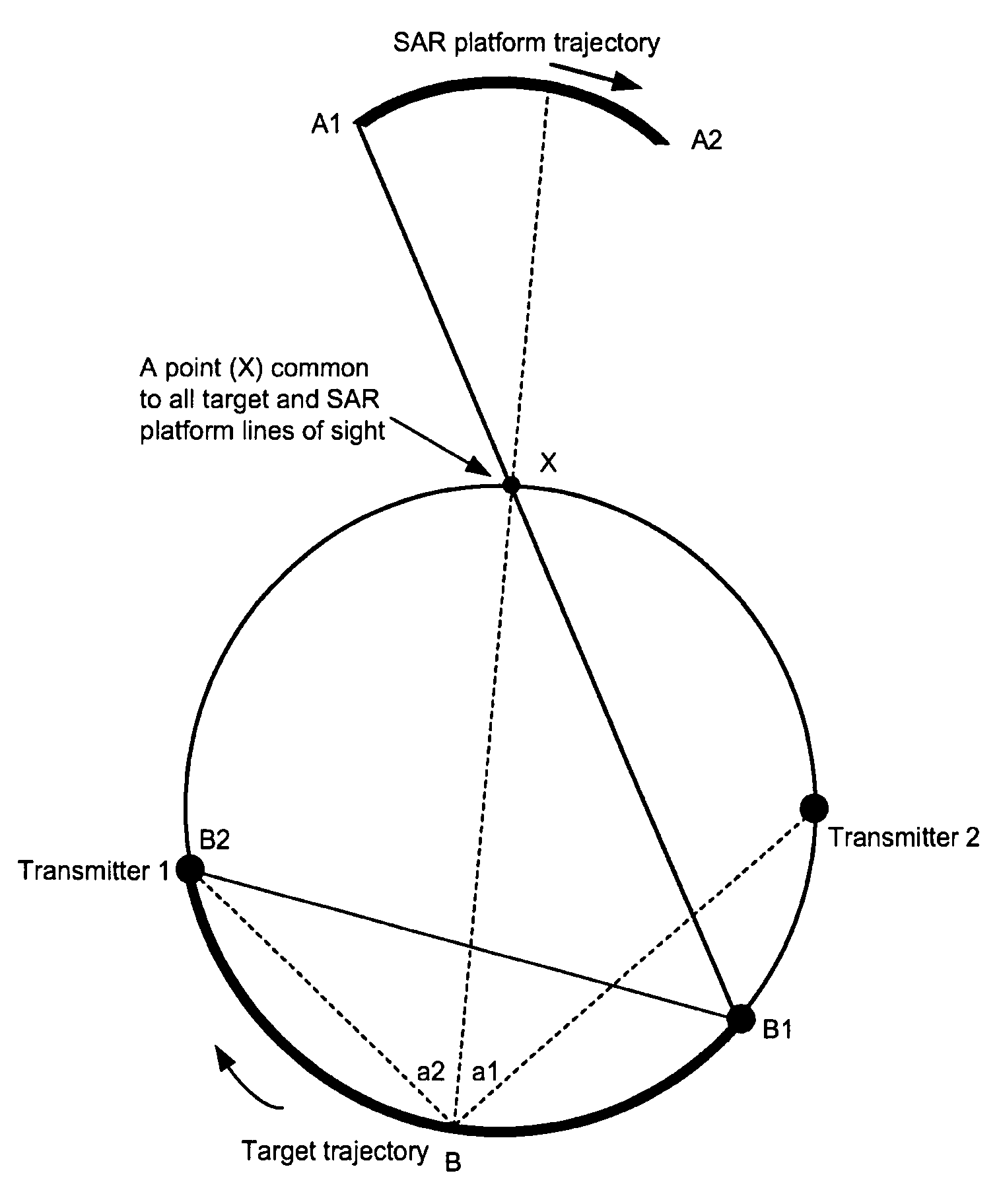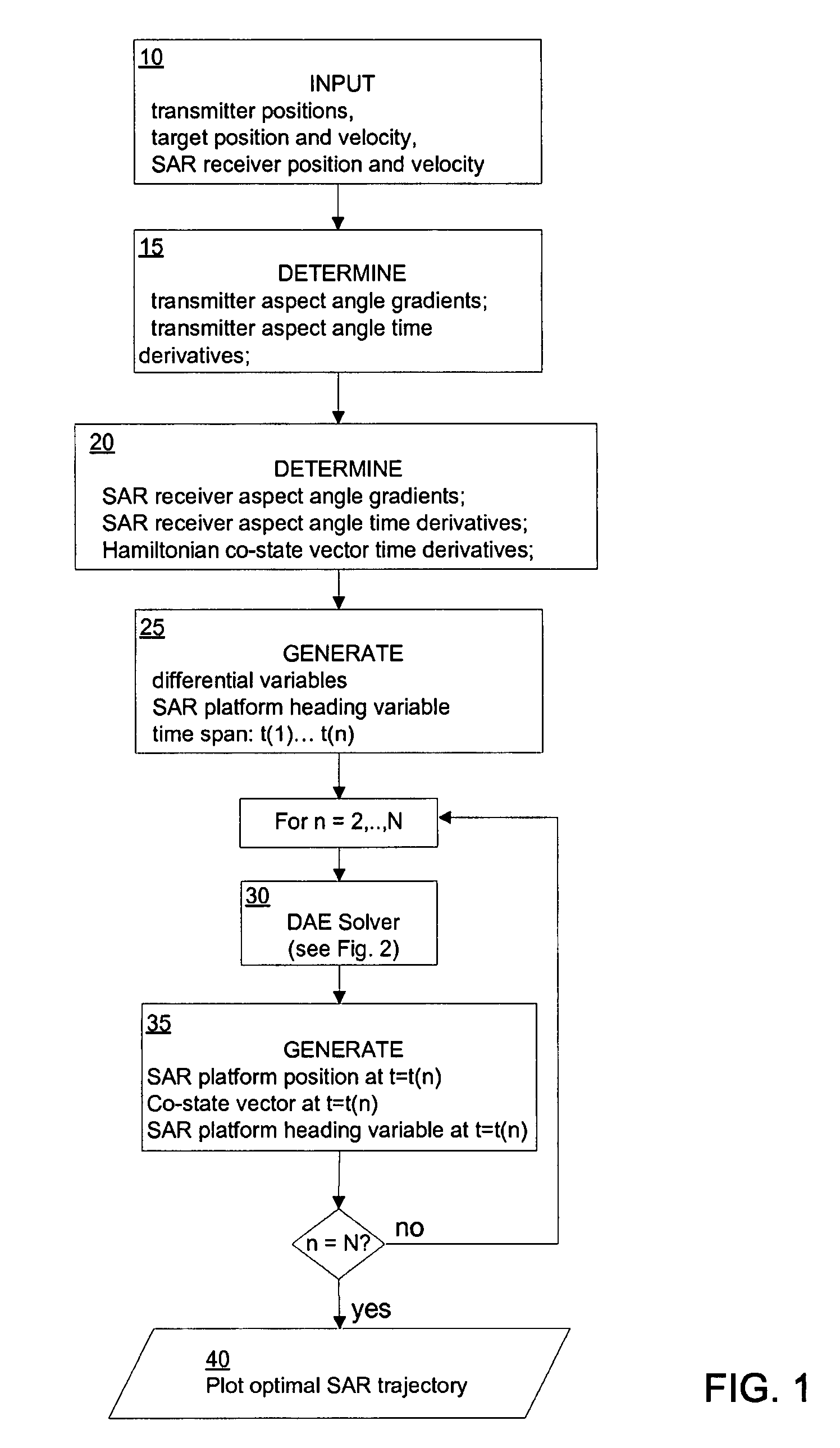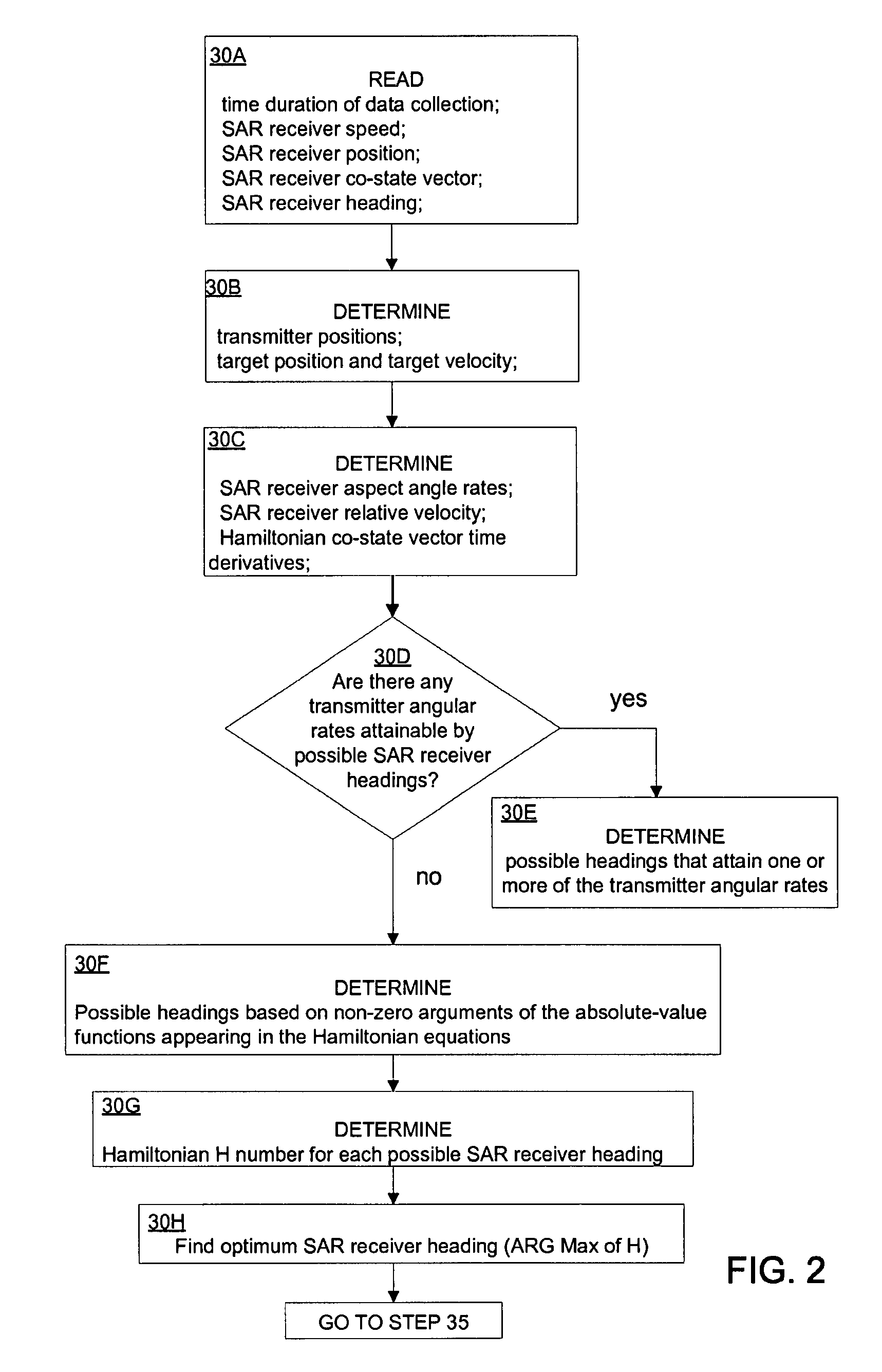Synthetic aperture radar systems and methods
a radar and synthetic aperture technology, applied in the field of synthetic aperture radar, can solve the problems of difficult alignment of two separate reference systems of a bistatic sar system, difficult to achieve accurate results, and difficulty in generating quality images in a bistatic sar
- Summary
- Abstract
- Description
- Claims
- Application Information
AI Technical Summary
Problems solved by technology
Method used
Image
Examples
Embodiment Construction
[0012]In the following paragraphs, the Optimal SAR Receiver Path algorithm will be described in detail by way of example with reference to the attached drawings. While the Optimal SAR Receiver Path algorithm is capable of embodiment in many different forms, there is shown in the drawings and will herein be described in detail specific embodiments, with the understanding that the present disclosure is to be considered as an example of the principles of the Optimal SAR Receiver Path algorithm and not intended to limit the Optimal SAR Receiver Path algorithm to the specific embodiments shown and described. That is, throughout this description, the embodiments and examples shown should be considered as exemplars, rather than as limitations on the Optimal SAR Receiver Path algorithm.
[0013]Embodiments of the Optimal SAR Receiver Path algorithm and associated methods (hereafter “OSRP”) employs an algorithm and methods to determine the best trajectory, or equivalently in the case of constan...
PUM
 Login to View More
Login to View More Abstract
Description
Claims
Application Information
 Login to View More
Login to View More - R&D
- Intellectual Property
- Life Sciences
- Materials
- Tech Scout
- Unparalleled Data Quality
- Higher Quality Content
- 60% Fewer Hallucinations
Browse by: Latest US Patents, China's latest patents, Technical Efficacy Thesaurus, Application Domain, Technology Topic, Popular Technical Reports.
© 2025 PatSnap. All rights reserved.Legal|Privacy policy|Modern Slavery Act Transparency Statement|Sitemap|About US| Contact US: help@patsnap.com



